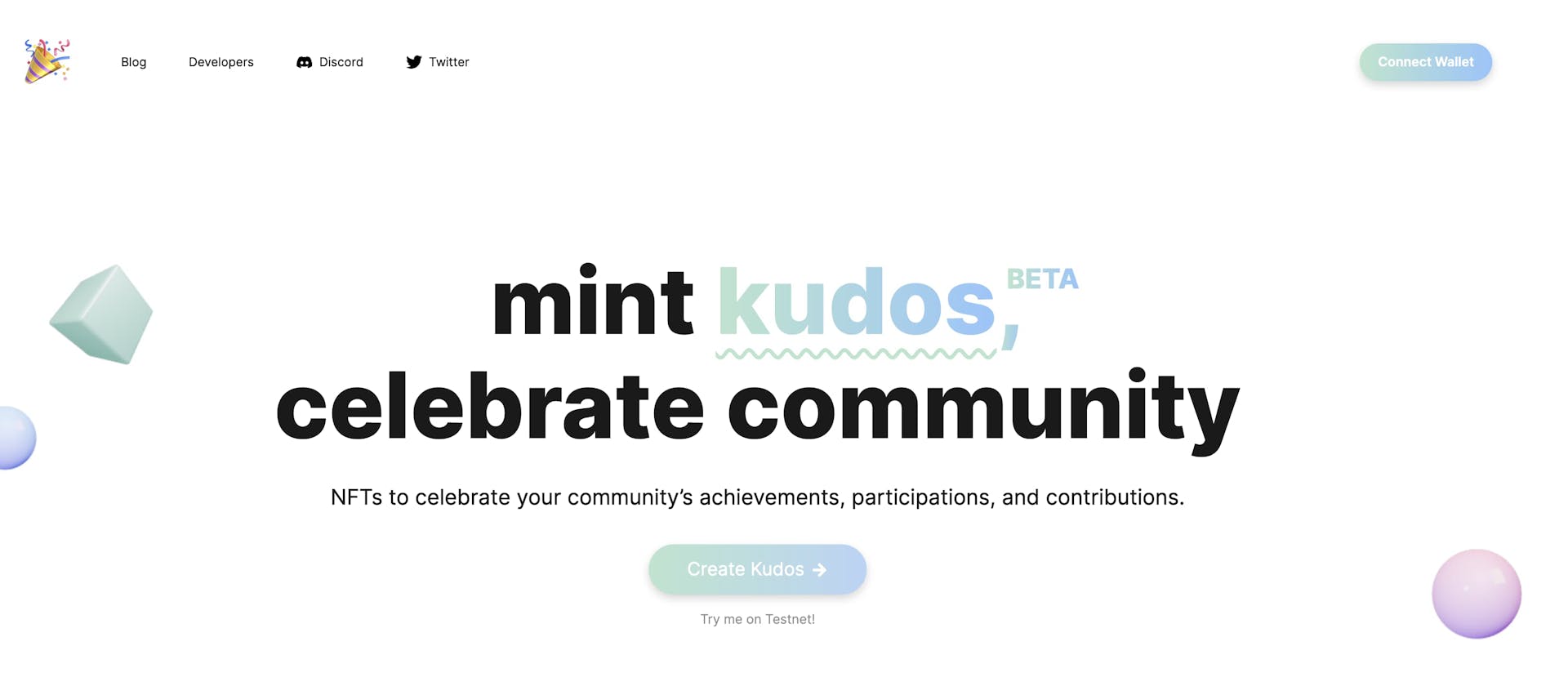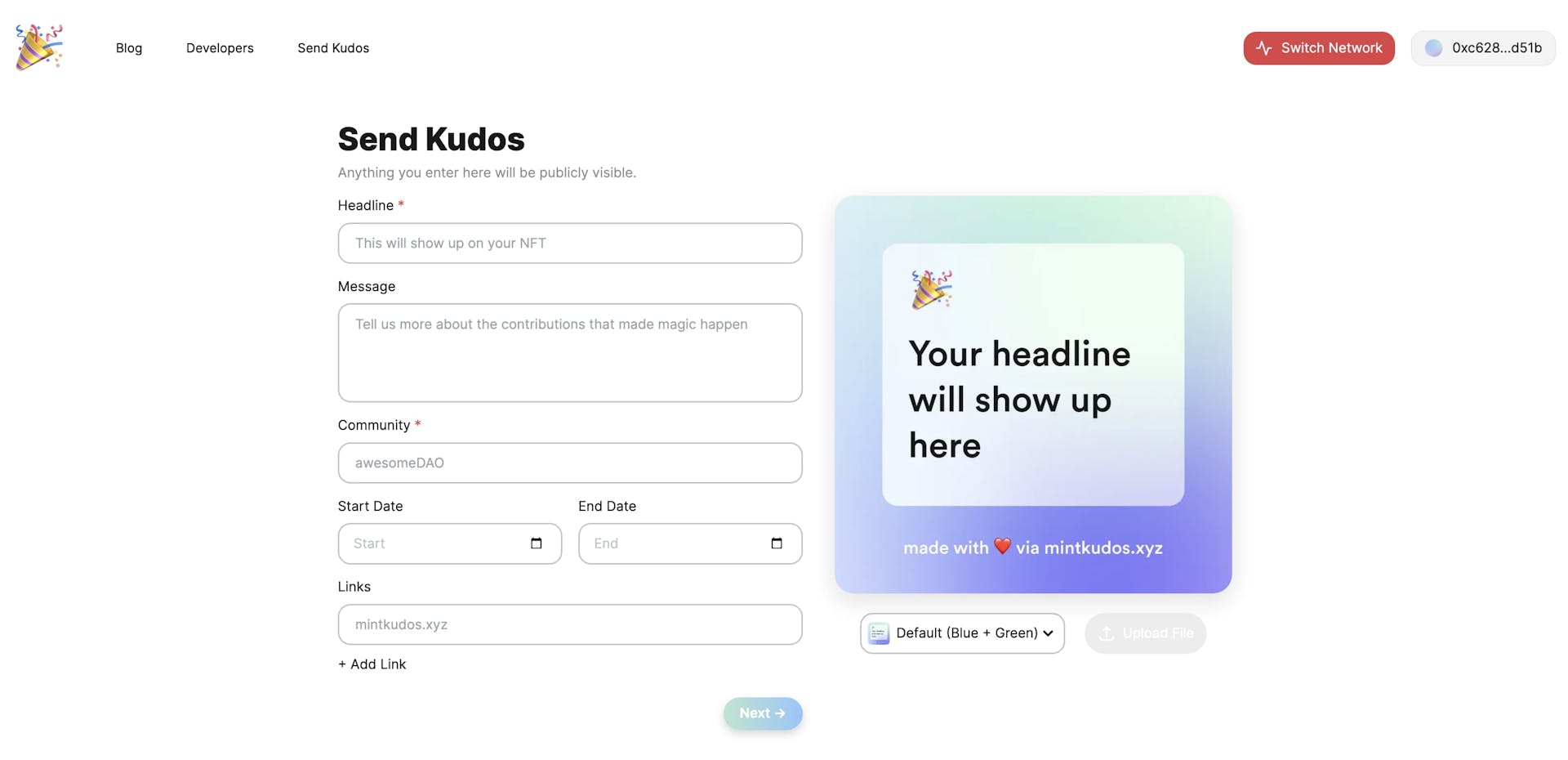
How to Use DAO Achievement Tools
Written by Frederik B
Achievements serve as a means of acknowledging and rewarding individuals for their contributions to a DAO. Similar to the way a traditional organization have "employee of the month" awards, in a DAO, achievements can be used to give public recognition to individuals who have made significant contributions.
How to Setup Mint Kudos for Your DAO
There are a few different web3 achievement tools available, but perhaps the most well-known is Mint Kudos, an open-source tool that anyone can use to create and manage achievements for a DAO.
Here is a simple 3-step process to setup Mint Kudos:
1. The first step is to visit the Mint Kudos website and connect your wallet by clicking on the "Connect Wallet" button located on the website's homepage.

2. After successfully connecting your wallet, you can begin creating kudos for your DAO by clicking on the "Create Kudos" button.
3. After clicking on the "Create Kudos" button, simply fill out the "Kudos" form, which allows you to specify the recipient's address, the DAO, and the reason for granting the kudos. After reviewing the information, click on "Next" to proceed.

And that's all there is to it! Mint Kudos makes it easy to give public recognition to individuals in a DAO.
List of DAO Achievement Tools
In addition to Mint Kudos, there are several alternative DAO Achievements, such as:
Kleoverse - known as the platform of work in Web3, Kleoverse can be used by DAOs to curate their ideal decentralized social space.
Noox - Noox allows for the creation of customizable soulbound NFTs.
POAP - POAP allows for the creation and collection of unique community badges.
GitPOAP - GitPOAP is a contributor recognition platform that integrates POAP issuance into GitHub.
FLOAT - Create events for your web3 communities and prove that they were actually there.
Sismo - Sismo is a modular attestation protocol focused on decentralization, privacy, and usability.

Related overviews
Learn how Japan's government is accelerating innovation and how companies are using blockchain technology.
Japan Airlines and Calbee, a Japanese Snack Food company, are using NFTs to promote tourism and brand loyalty.
WaveHack is the biggest web3 hackathon in Japan, and is being held from mid-April to the end of August 2024.

Build blockchain magic
Alchemy combines the most powerful web3 developer products and tools with resources, community and legendary support.